Why good cycling infrastructure is a priority to make people-friendly places?

Tibbalds
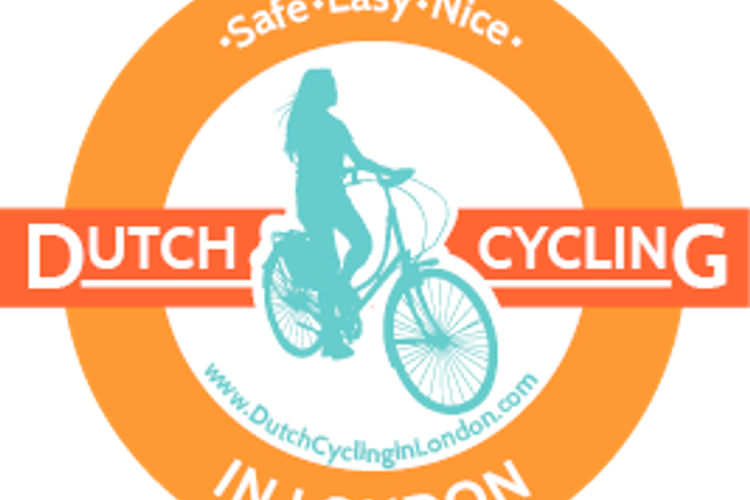
In my previous article, I explored the history of cycling in Dutch culture – something that many people in the UK think is a given. In this article, I explore the many direct and indirect benefits of making places cyclable, from the individual to the global scale. They are so many benefits that it is surprising that British authorities are not doing everything they possibly can to ensure that their cities are better adapted to safe cycling for all!
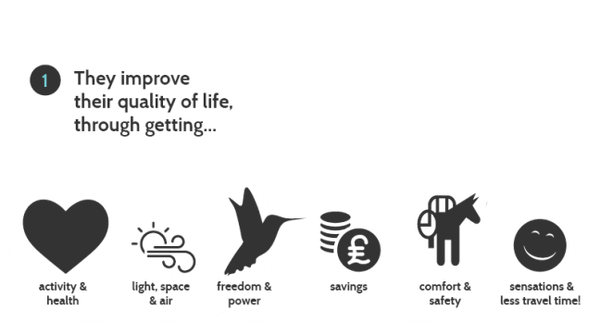
Individual scale
Do you want to improve people’s quality of life? Help them to cycle!
- Active traveling helps people to keep fit and healthy and to save time and money otherwise spent at the gym. Spending time outdoors, breathing fresh air and bathing in sunlight instead of spending time in confined cars or crowded public transport is good for health!
- Cyclists don’t need to rely on anyone to move around. No bus available? No problem. Under 17 with no parents on hand to provide lifts? No problem. No taxis or Ubers in the area? No problem.
- By bike, people can easily travel from door to door in one go. No need to walk between stations and destinations, no need to park the car far away from the destination. It’s so practical!
- Compared to a car, bikes are very affordable and do not need expensive fuel. Maintenance costs are minimal too, with no parking charges. So, people can travel around for almost no cost!
- Need a car because of kids, pets or heavy stuff to transport or because of a poor health condition? Not necessarily! In the Netherlands, people still cycle at a very old age because they find it easier than walking. They also bring their kids to school, do their groceries and even move their furniture by bike!
- Remember how you felt happy as a kid when you cycled because of the sensations it brought to you? Well good news, these positive sensations are the same for adults, if they cycle in a safe environment!
- You hate traffic jams and diversions, wasting your time as a driver? Or late trains and buses? Not a problem for cyclists! At a local level, cycling is very often the fastest and most reliable mode of transportation to get around.
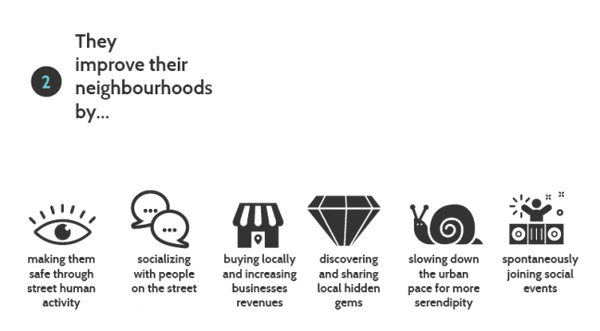
Neighbourhood scale
Do you want friendlier neighbourhoods with a great community life? Make them cyclable!
- We all know that seeing people in streets makes places feel safer. While it is rare to see someone’s face through a car window, you can see a person’s face on their bike!
- What makes places friendly is also the fact that you can talk to people on the street and greet neighbours. That’s possible while walking and cycling too! A little more difficult when blocked by a car. It’s not rare for cyclists to have a little chat with each other at the traffic lights.
- Many studies have now shown that cyclists spend much more money locally than drivers or public transport users. Cyclists, just as pedestrians, and when dressed normally (that’s without the Lycra and cleats), do more spontaneous shopping than drivers because they can more readily see shop windows and stalls and park nearly anywhere. Drivers can’t park anywhere, public transport users won’t stop their bus in the middle of their journey and therefore, are more prone to do destination shopping only. That’s why it is crucial to make high streets cycling-friendly!
- Being able to move around and stop everywhere like pedestrians, cyclists are more likely to discover a neighbourhood’s natural or cultural gems and enjoy their local area.
- Cyclists can also participate in more spontaneous events. A street party? A movie in the park? Live music in the pub? Let’s stop and enjoy! Compared to drivers, they can participate to a much greater degree in neighbourhood social events and that’s what helps make an area people-friendly.
Even at a rate of three times faster than pedestrians, the speed of a cyclist is still much lower than the one of motorised vehicles. Cyclists help to slow the pace of places to create a more laid-back atmosphere.
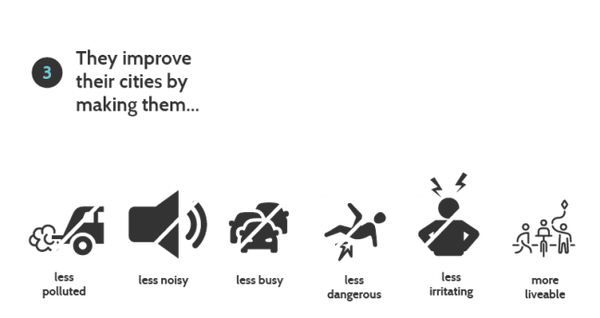
City scale
Do you want a nicer and safer city as a whole? Make it good for cycling!
- Bicycles do not pollute the air. Who doesn’t like fresh air?
- Bikes do not create noise pollution. Who likes traffic noise?
- Bicycles barely create any visual hindrances. What about all these parked cars hiding beautiful architecture, street stalls and windows? We can park 10 bikes on one car parking space.
- Bikes don’t create toxic congestion. You can fit four times more people on bikes than those driving on a same section of street (in the case of one person per bike or car).
- Bicycles are much less likely to create serious accidents than cars, buses or lorries due to their light structure and low speed.
- If they have the right cycling infrastructure, cities become much more liveable for all other users too.
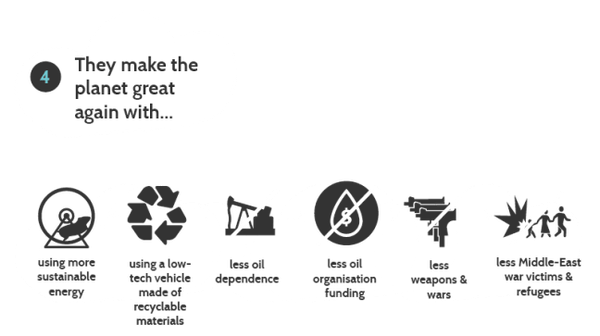
Planet scale
Do you want to save the planet? Make cycling for all a priority!
- Bikes (at least, non-electric) are low-tech vehicles with minimal electronic and plastic parts. Frames are made of metals that are usually very much recyclable and if of good quality, can last hundreds of years (see some of the old black Dutch bikes called ‘omafietsen’ that were made at the beginning of the 20th century).
- They are easy to repair too! Everyone can quickly learn and do it without many tools or materials.
- Human power is a very sustainable source of energy! No oil, no nuclear, no fracking. No polluting particles in the air!
- Being less dependent on oil industries help us to diminish our indirect and often unconscious funding of organisations that use oil revenues to buy weapons and destabilise places such as in the Middle-East.
- That means fewer wars, fewer war victims and potentially fewer people forced to migrate to safer countries.
Do you know of any other simple solutions that could have such a beneficial impact on so many different aspects of life? If you do, let me know!
To work well, however, this simple solution should be accessible to all, not only to an elite of fit, young white men – and that is why creating a safe cycling infrastructure is key. In the Netherlands, where cycle facilities are everywhere and of good quality, everyone cycles, regardless of their age, gender, health condition or cultural background.
Find out more about how quality cyclable places look like on my website ‘Dutch Cycling in London’.
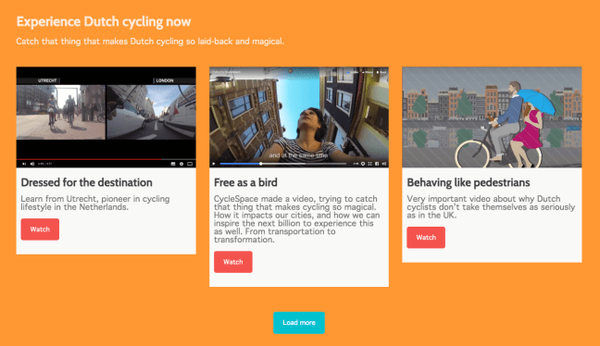
Happy cycling to all!
Related Updates
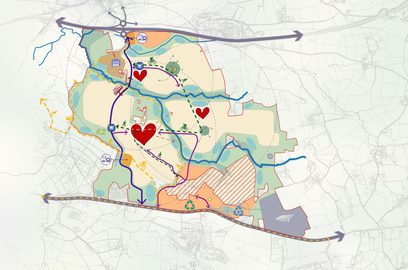
Marlcombe, East Devon selected as one of the New Towns

Tibbalds

Lizzie Le Mare attending LREF 2025

Tibbalds
Newham Council’s 50% affordable Carpenters Estate regeneration gets underway

Tibbalds
Stay In Touch
Sign up to our Newsletter
Subscribe to our newsletter to receive updates about making people friendly places.